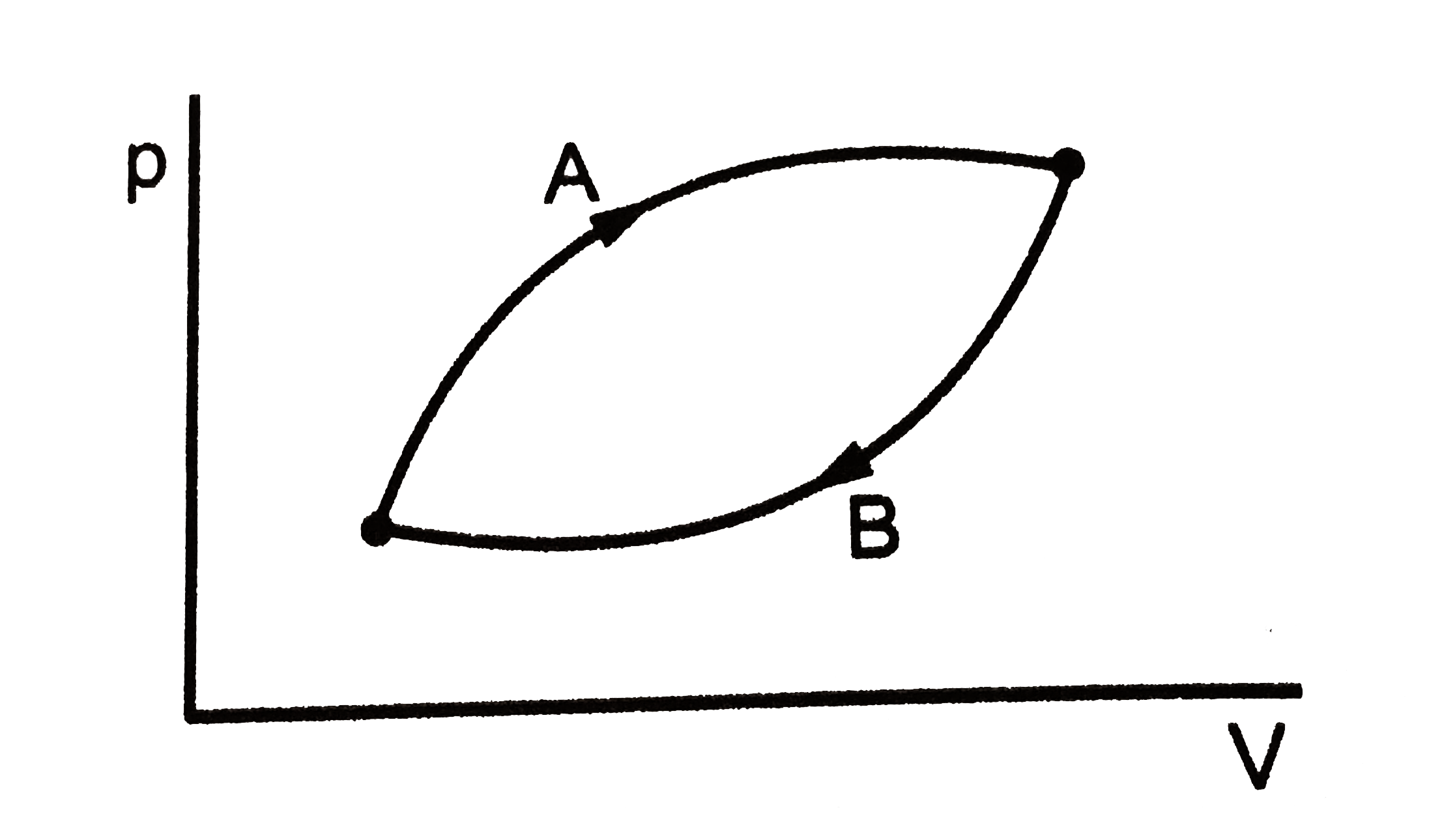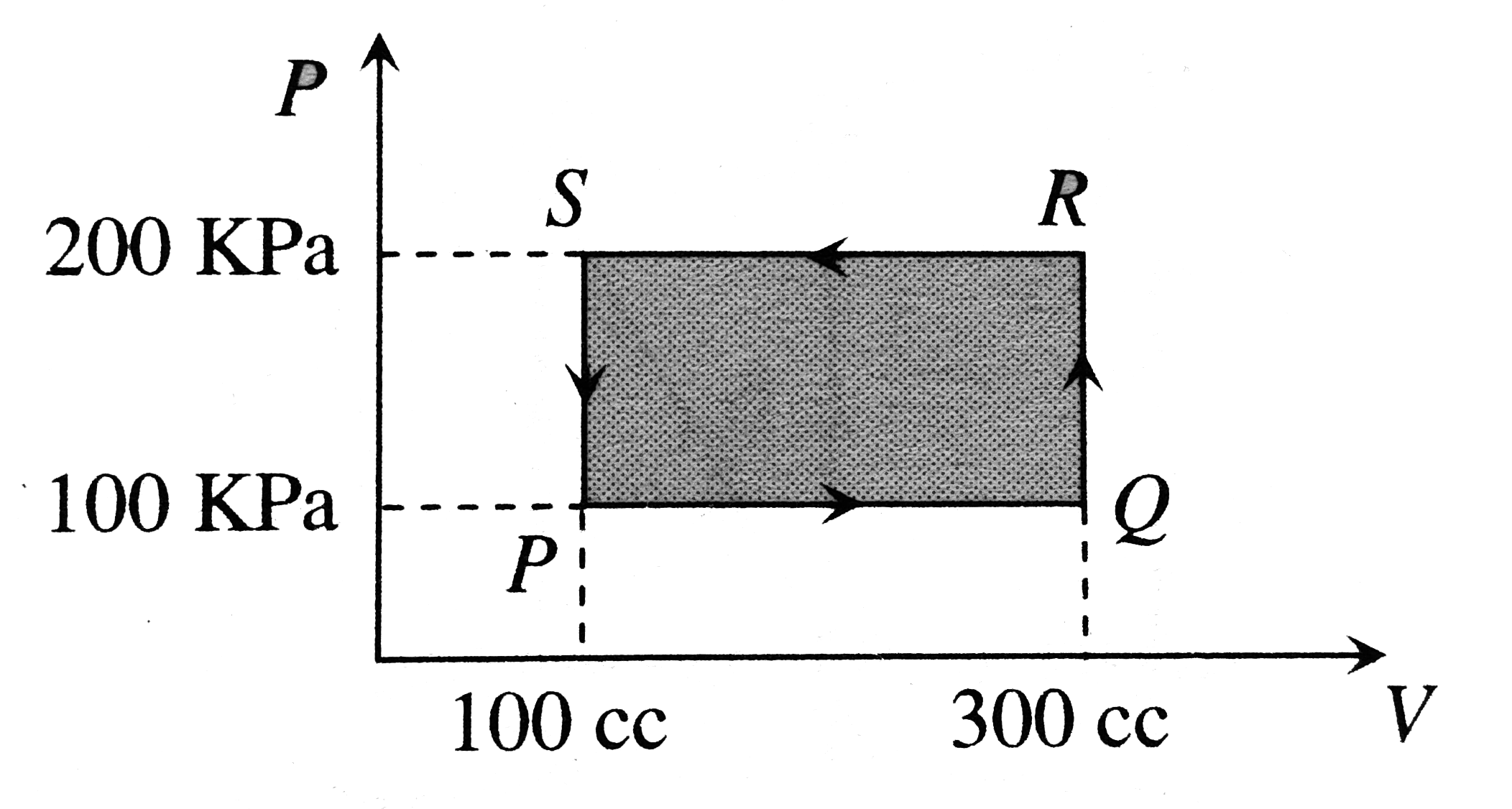Refer to figure ΔU1 and ΔU2 be the changes in internal energy in the system in process A+B and ΔW be the net work done by the system in the process A+B,

A
(i),(iii)
B
(ii),(iii)
C
(iii),(iv)
D
(i),(iv)
Video Solution
Text Solution
The correct Answer is:A
In cyclic process, ΔU=0 i.e., ΔU1+ΔU2=0
ΔQ=ΔW
|
Topper's Solved these Questions
Similar Questions
Knowledge Check
Refer to let ΔU1 and ΔU2 be the changes in internal energy in the system in process A+B and ΔW be the net work done by the system in the process A+B,
 AΔU1+ΔU2=0.BΔU1−ΔU2=0CΔQ−ΔW=0.DΔQ+ΔW=0.
AΔU1+ΔU2=0.BΔU1−ΔU2=0CΔQ−ΔW=0.DΔQ+ΔW=0.Refer to let ΔU1 and ΔU2 be the changes in internal energy of the system in the processes A and B. then
AΔU1>ΔU2BΔU1=ΔU2CΔU1<ΔU2DΔU1≠ΔU2In given figure, let ΔU1 and ΔU2 be change in internal energy in process ABC and CDA respectively. ΔQ and W be the net heta given and net work done by the system in the process ABC+CDA, then
 AΔU1+ΔU2=0BΔU1−ΔU2=0CΔQ−W=0DΔQ+W=0
AΔU1+ΔU2=0BΔU1−ΔU2=0CΔQ−W=0DΔQ+W=0
In a cyclic process the change in the internal energy of system is
View SolutionIn a cyclic process, work done by the system is
View SolutionIn a cyclic process, work done by the system is
View SolutionConsider the two process on a system as shown in figure. The volumes in the initial state and in the final state are the same in the two process A and B. If W1 and W2 be the work done by the system in the processes A and B respectively then-

View SolutionA thermodynamic system is taken through the cyclic PQRSP process. The net work done by the system is

View Solution
